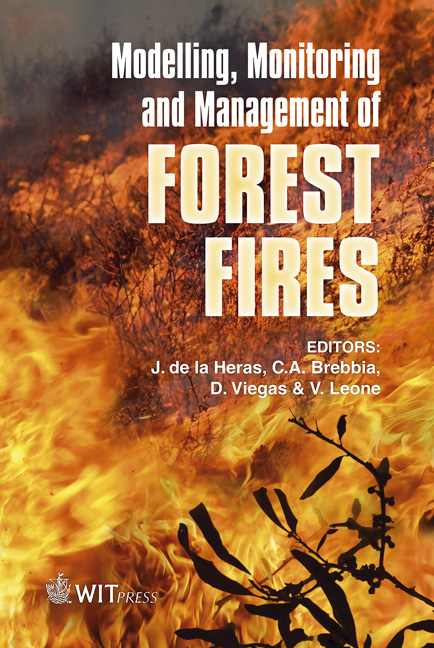An Operational Dropping Model Towards Efficient Aerial Firefighting
Price
Free (open access)
Transaction
Volume
119
Pages
10
Page Range
51 - 60
Published
2008
Size
1,027 kb
Paper DOI
10.2495/FIVA080061
Copyright
WIT Press
Author(s)
J. H. Amorim, C. Borrego & A. I. Miranda
Abstract
Forest fires have multifaceted impacts on societies. When integrated in an effective firefighting strategy, the rapid access of aerial resources to remote areas can play a crucial role. However, the efficiency of an aerial drop, due to the erratic atmospheric conditions and reduced visibility, depends essentially on the pilot’s expertise since on-board systems for computer-assisted drops are unavailable. This work addresses the development of a numerical model for the real-time simulation of an aerial drop of firefighting products. The gas-phase is modelled through a vegetative canopy model coupled to a modified surface-layer model under diabatic conditions. For the particulate phase, the primary breakup of the retardant jet is obtained through the continuous stripping of droplets from the exposed surfaces by Rayleigh-Taylor and Kelvin-Helmholtz instabilities. The formed droplets are then subjected to distortion and secondary breakup due to aerodynamic forces mostly based on experimental correlations defined in terms of the Weber number. During the process, droplets are dispersed applying a Lagrangian approach. The code is linked to a GIS-based graphical interface, thus privileging the use by operational people. Computed ground pattern has been compared, with generally good results, with experimental data from a set of real scale dropping tests in which both conventional and constant flow-rate delivery systems were used. The model has potential to be used as a demonstrative application in firefighters training; as an operational tool during firefighting operations; or in the development of new products, as an alternative method to real scale dropping tests. Keywords: aerial firefighting, operational numerical model, drop optimization.
Keywords
aerial firefighting, operational numerical model, drop optimization.





